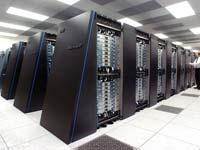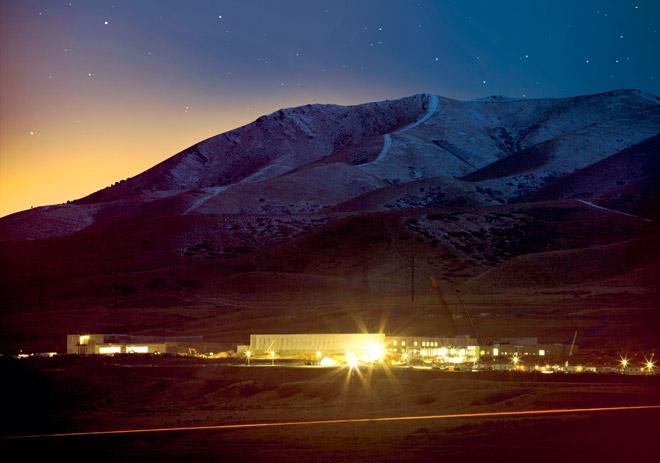 Imagine the world’s biggest super computer.
Imagine the world’s biggest super computer.
One so large that it can track the activities of all cellphones in the world.
And also laptops, netbooks, desktops, tablets, PDA’s… every chip-run appliance on the planet.
The US government’s National Secuity Agency has not only imagined it, they are building it as you read this – in the middle of the Utah desert.
A recent feature in Wired Magazine revealed the near-bottomless depths of storage capacity available in the new super-secret, US$2 billion,
one-million-square-foot data center the NSA is building in Bluffdale, Utah.
It can store yottabytes of data - equivalent to septillion bytes, a number “so large that no one has yet coined a term for the next higher magnitude.”
Data storage, like volume, distance and other measurements, ascends along an exponential scale. One thousand kilobytes becomes one megabtye, which multiplied by one thousand then becomes one gigabyte, terabyte, petabyte, exabyte, zettabyte, and finally yottabyte.
The entire world wide web is thought to contain 500 exabytes of data or half a zettabyte, or not even 1% of a yottabyte.
Focused on data mining and code-breaking, the facility is five times the size of the US Capitol. It is expected to house a “complete contents of private e-mails, cell phone calls, and Google searches, as well as all sorts of personal data trails - parking receipts, travel itineraries, bookstore purchases, and other digital ‘pocket litter’.”
The NSA, adds Bamford, “has established listening posts throughout the nation to collect and sift through billions of e-mail messages and phone calls, whether they originate within the country or overseas.
So even if you are living in Canada, the UK, or anywhere else in the free world, it is quite likely your digital footprint will be stored and turned into a profile by the US government.

At the centre of the facility is a supercomputer of almost unimaginable speed trolling day and night for patterns. This will enable even the hardest of 256-bit encryption ciphers to be cracked.
Once it’s operational, the Utah Data Center will become, in effect, the NSA’s cloud. The center will be fed data collected by the agency’s eavesdropping satellites, overseas listening posts, and secret monitoring rooms in telecom facilities throughout the US. All that data will then be accessible to the NSA’s code breakers, data-miners, China analysts, counter-terrorism specialists, and others working at its Fort Meade headquarters and around the world.
Large as it is, that mega-project in Utah is just one of many sprouting like mushrooms in the sunless forest of the US intelligence world.
In cost, for example, it barely tops the $1.7 billion headquarters complex in Virginia that the National Geospatial-Intelligence Agency, with an estimated annual black budget of at least $5 billion, built for its 16,000 employees.
Opened in 2011, it’s the third-largest federal building in the Washington area.
Or what about the 33 post-9/11 building complexes for top-secret intelligence work that were under construction or had already been built when Washington Post reporters Dana Priest and William Arkin wrote their “Top Secret America” series back in 2010?
Admittedly, since 9/11 the US Intelligence community, as it likes to call itself, has expanded to staggering proportions. The country’s 17 major intelligence agencies have a combined annual intelligence budget of more than $80 billion (a figure which doesn’t even include all intelligence expenditures).

With such a disproportionate budget in comparison to the actual threat, it is easy to conclude that America’s intelligence agencies are creating, i.e. feeding, their own reality. As for the new supercomputer, the logic is that by data mining and decoding the planet in an eternal search for enemies, the US government will actually uncover enemies, whether they intended to be or not.
By this logic, anyone might be a terrorist or in touch with one - even perfectly innocent people whose data must be held until the moment when the true pattern of threat comes into view and everything is revealed.
In the new world of the National Security Complex, no one can be trusted - except the officials working within it, who in their eternal bureaucratic vigilance clearly consider themselves above any law.
The system that they are constructing (or that, perhaps, is constructing them) has no more to do with democracy than it does with a Soviet-style state.
Think of it as a phenomenon for which we have no name. Like the yottabyte, it’s something new under the sun, still awaiting its own strange and ugly moniker.
Or we could resort to an old name, but with a modern twist –
Digital Thoughtcrime anyone?
For more information on this new Super Data Center, read the original, in-depth story here.

